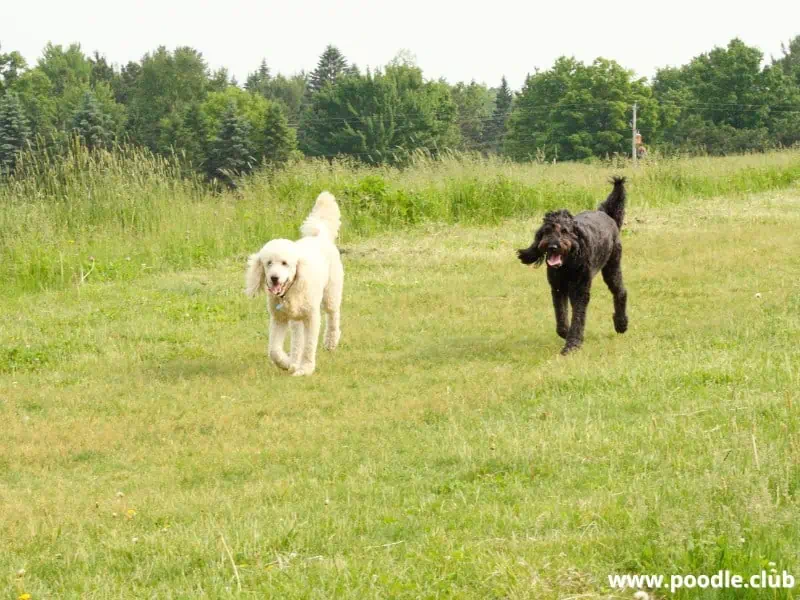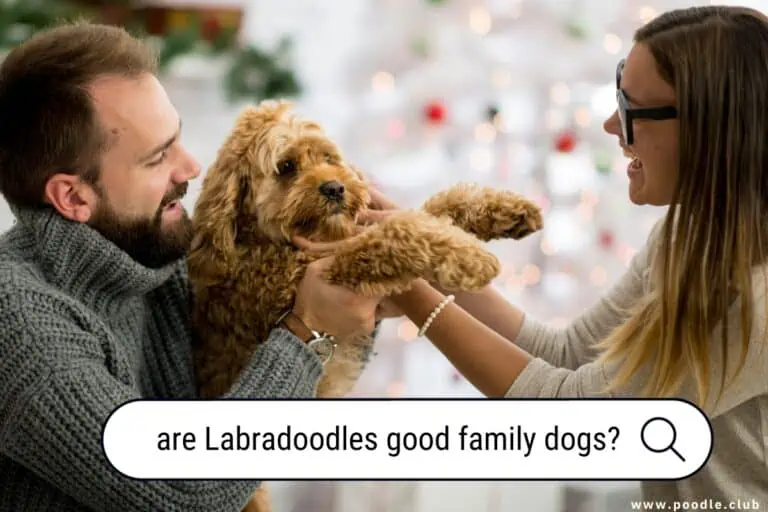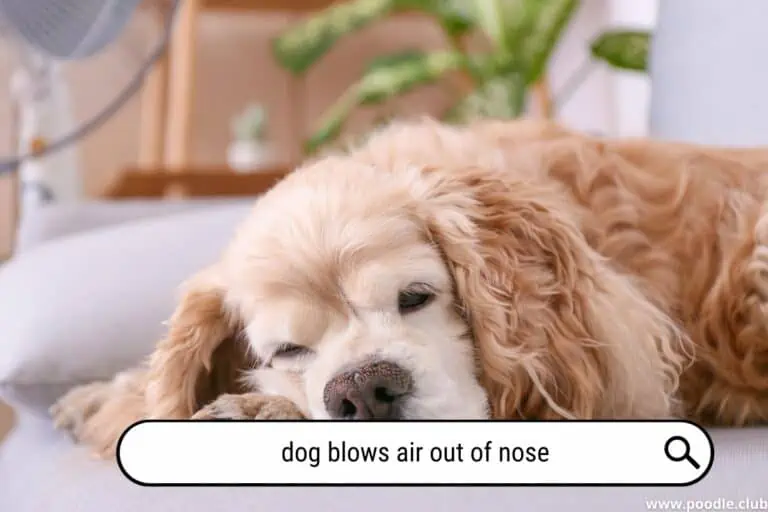When Do Labradoodles Go Into Heat? Key Facts and Tips
As a Labradoodle owner, it’s important to be aware of your dog’s heat cycle and when it occurs to ensure their overall well-being.
Labradoodles, a crossbreed of the Labrador Retriever and the Poodle, typically experience their first heat cycle between the ages of 6 and 12 months, although it may vary depending on factors such as size, health, and genetics.
Understanding the heat cycle, recognizing the signs, and knowing how to care for your Labradoodle during this time can greatly improve their comfort and reduce the risk of unwanted pregnancies or health complications.
The heat cycle in Labradoodles lasts for approximately 2 to 4 weeks, occurring once or twice a year. During this time, your dog will exhibit physical and behavioral changes, such as vaginal swelling, discharge, increased urination, and clinginess. It’s crucial to keep a close eye on your Labradoodle during the heat cycle to prevent unplanned mating and to address any health issues that may arise.

Key Takeaways
- Labradoodles generally experience their first heat cycle between 6 and 12 months of age.
- A typical heat cycle lasts 2 to 4 weeks and includes observable physical and behavioral changes.
- Proper care and attention during the heat cycle can prevent unwanted pregnancies and health complications.
Understanding the Heat Cycle in Labradoodles
The reproductive cycle of a Labradoodle consists of four stages: proestrus, estrus, diestrus, and anestrus. As a Labradoodle owner, it is important for you to be familiar with these stages and know when your dog is in heat.

Proestrus is the beginning of the heat cycle. During this stage, your Labradoodle’s ovaries will start to produce follicles, and she will exhibit physical and behavioral changes. Her vulva may swell, and you may notice bloody discharge.
She might also become more nervous, clingy, or aggressive. Proestrus typically lasts between 7 to 10 days.
Once proestrus is over, your Labradoodle will enter the estrus stage. This is when she becomes fertile and is receptive to mating. During this time, her discharge will change in color and consistency, usually becoming straw-colored and thinner.
She may also exhibit behavioral changes such as flagging her tail or flirting with other dogs. Estrus may last from 5 to 14 days.
After estrus, your Labradoodle enters the diestrus phase. This occurs whether she has mated or not. She will no longer be interested in mating and her discharge will subside.
Her body may still display some signs of being in heat, such as a swollen vulva. Diestrus generally lasts from 60 to 90 days.
Finally, Labradoodles enter the anestrus phase. This is the period of rest between heat cycles. During this time, your dog’s body prepares for the next cycle, and no physical or behavioral signs of being in heat are present.
PuppySpot is a reputable dog marketplace where you can browse and find compatible puppies right from the comfort of your home. They have placed over 200,000 puppies into homes in the US!
Anestrus can last from 2 to 4 months.
In summary, understanding the different stages of the reproductive cycle in Labradoodles is crucial for proper care and health management. By knowing the signs and symptoms of each stage, you can ensure your dog’s well-being and take necessary actions in case of any complications.
Signs That Your Labradoodle is in Heat

Physical Changes
When your Labradoodle is in heat, you may notice several physical changes. The most obvious sign is a swollen vulva. This swelling usually begins a few days before the first discharge appears.
Another sign is the presence of bloody discharge or vaginal discharge. The discharge may vary in color, ranging from light pink to dark red, and may have a watery or thick consistency.
During the heat cycle, your dog might also experience increased urination. The urge to mark territory becomes stronger, and she may frequently visit specific spots to urinate. This is her way of advertising her reproductive status to potential mates.
Behavioral Changes
In addition to physical changes, your Labradoodle may exhibit several behavioral changes when in heat. One such change is mating behavior, such as attempting to mount other dogs or objects. This behavior is a clear indication that your Labradoodle is feeling the effects of her hormones.
Another key sign to look out for is nesting behavior. She may become increasingly focused on finding a safe and comfortable spot in your home to prepare for delivering her litter.
You might also notice mood swings in your Labradoodle during this time. Some dogs become more affectionate, while others may be more irritable or anxious. Your pet’s energy levels may fluctuate, with periods of increased activity followed by moments of restlessness.
It is important to monitor your Labradoodle’s physical and behavioral changes during her heat cycle to ensure that she stays safe and healthy. By understanding these signs, you can better attend to her needs and ensure a comfortable experience for both of you.
How to Care for Your Labradoodle During the Heat Cycle?

Home Care Tips
During your female Labradoodle’s heat cycle, it’s essential to make her feel comfortable and manage the situation effectively. Keep her clean and well-groomed by using dog wipes or a damp cloth to clean the area around her vulva. Regular grooming will also help in minimizing shedding and keeping her coat healthy.
To prevent unwanted attention from male dogs or accidental mating, always keep your Labradoodle on a leash while outdoors. Be cautious about her interactions with other dogs, and keep her away from potential mates.
At home, consider using dog diapers to manage the discharge and prevent staining. Make sure the diaper is the right size for your Labradoodle to ensure her comfort and hygiene. You may also want to provide her with a cozy space to relax and rest.
To help with your Labradoodle’s mood, be patient and give her affection while she goes through the heat cycle. Some dogs may become more affectionate or clingy, so be prepared to offer extra cuddles and reassurance.
When to Consult a Veterinarian?
Consulting a veterinarian is vital for managing your female Labradoodle’s overall health and well-being during her heat cycle. A veterinarian can provide advice on how to maintain her health, including whether spaying is appropriate for your dog and when it can be safely done. Spaying your Labradoodle can help prevent health issues related to heat cycles and avoid unwanted pregnancies.
If you notice excessive licking or any signs of infection, such as swelling, redness, or an unpleasant odor, contact your veterinarian as soon as possible. Your dog’s health should always be a priority, and professional help is essential to ensure proper care and overall well-being.
In conclusion, it’s crucial to monitor and care for your Labradoodle during her heat cycle. By following home care tips, maintaining hygiene, and consulting a veterinarian when necessary, you can ensure that your furry companion stays happy and healthy.
The Risk and Prevention of Unwanted Pregnancy
As a Labradoodle owner, it’s crucial for you to understand the risk of unwanted pregnancies and how to prevent them. Female Labradoodles typically go into heat twice a year. During this time, they are more susceptible to becoming pregnant if they come into contact with intact male dogs.

Unwanted pregnancies can bring about various issues, including unwanted litters and medical risks to the mother and puppies.
The Importance of Spaying
Spaying is a surgical procedure that removes the reproductive organs of female dogs, thus preventing pregnancy. The benefits of spaying extend beyond just preventing unwanted pregnancies. By spaying your Labradoodle, you can also reduce the risks related to their reproductive organs, such as infections and certain types of cancers.
Spaying is usually performed under general anesthesia and should ideally be done before your Labradoodle reaches puberty. Spaying your dog at an appropriate age can save you from dealing with unwanted litters and the potential complications linked to breeding and pregnancy.
In conclusion, familiarizing yourself with the risks of unwanted pregnancy and the benefits of spaying your Labradoodle will help ensure the well-being of your beloved pet. By taking preventive measures, you can protect your dog’s health and contribute to responsible pet ownership.
Common Health Issues and Their Prevention During the Heat Cycle

Health Issues Caused by Heat
During your Labradoodle’s heat cycle, there are several health issues that can arise. It’s essential to be aware of these potential problems and take preventive measures to ensure your dog’s well-being.
One common health issue during the heat cycle is infections. Both bacterial and viral infections can develop, including uterine infections. Uterine infections, such as pyometra, are particularly dangerous as they can lead to inflammation and life-threatening complications.
To prevent infections, it’s crucial to keep the area clean and dry. Regularly check for signs of discharge and consult your vet if you notice anything unusual.
Another significant concern during the heat cycle is the increased risk of cancer, particularly ovarian and uterine cancer. To minimize this risk, spaying your Labradoodle before her first heat cycle can be beneficial. Discuss this option with your veterinarian to determine the optimal timing for your dog.
The heat cycle can also be accompanied by behavioral problems. Your dog may become more anxious, irritable, or aggressive, leading to potential conflicts with other animals or people. In these situations, it’s essential to provide a secure environment for your Labradoodle and monitor her interactions with others.
Allocating a safe and quiet space for your dog to relax can help reduce stress and minimize behavioral issues.
In summary, it’s vital to remain observant and proactive about your Labradoodle’s health during her heat cycle. Prevent infections by maintaining cleanliness, consider spaying to reduce cancer risks, and monitor her behavior to ensure her well-being. Always consult your veterinarian for professional advice tailored to your dog’s specific needs.







